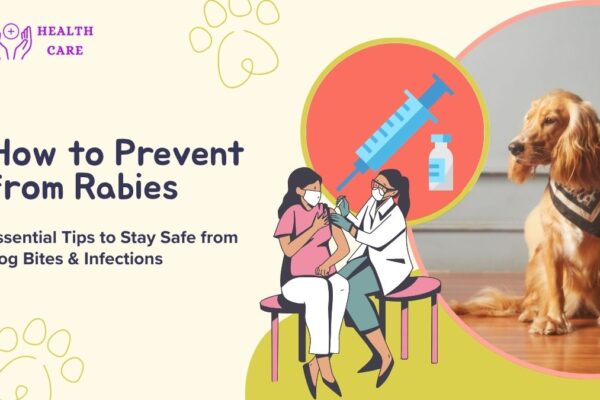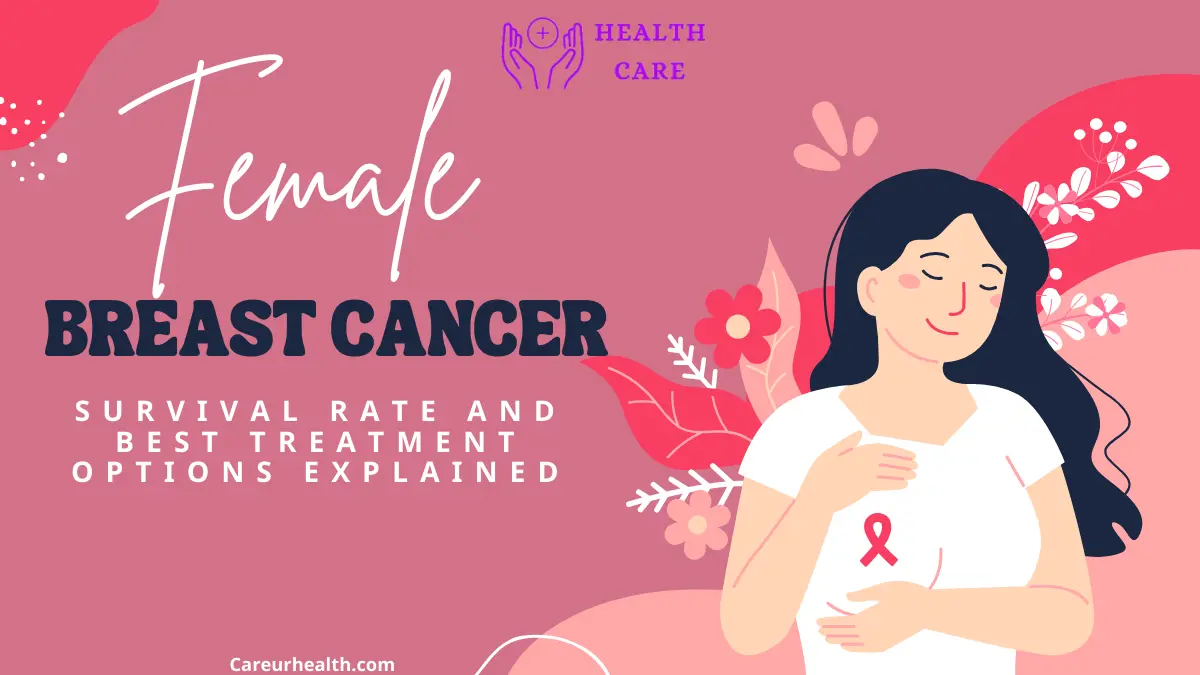Why this Breast cancer is the most common malignancy in women across the globe and remains a significant public health concern. It also arises when abnormal breast cells increase unchecked, forming a tumor that can invade the surrounding tissues or spread to distant parts of the body. In recent time, increased awareness, screening as part of routine care, and improvements in medical treatment have significantly improved early detection and survival. female breast cancer survival rate and treatment options
After all these developments, a breast cancer diagnosis is life-changing with emotional, physical, and financial costs. Understand female breast cancer survival rate and treatment. Awareness of crucial points such as survival rates, treatment, and prevention is crucial to patients, caregivers, and individuals at high risk. The aim of this article is to provide a comprehensive overview of female breast cancer with a focus on survival statistics as well as the most useful treatments.
Do you know what Is Breast Cancer?
Breast cancer is the development of cancer cells in the breast that don’t stop expanding. These cancer cells typically create a tumor, which can be seen on any X-ray or even as a lump. Breast cancer mostly happens in women but sometimes in men as well. Learn about female breast cancer survival rate and female breast cancer treatment.
There are different types of breast cancer, with the most frequent one being:
Invasive ductal carcinoma (IDC): Begins in the milk ducts and extends to the tissues that surround them.
Invasive lobular carcinoma (ILC): Arises in the lobules and can grow to surrounding tissues.
Triple-negative breast cancer: Lacks three typical receptors (ER, PR, and HER2) and is more invasive in nature.
HER2-positive breast cancer: Characterized by overexpression of the HER2 protein, leading to faster-growing cancer. Learn about the survival rate and treatment of female breast cancer.
Know more about female breast cancer survival rate and treatment options
Breast cancer is a condition where abnormal breast cells proliferate uncontrollably and develop tumours. If not controlled, the tumours will spread all over the body and prove to be deadly.Know about female breast cancer survival rate and treatment options.
Breast cancer cells start within the milk ducts and/or milk-producing lobules of the breast. The earliest type (in situ) is not dangerous and can be found in early stages. Cancer cells may invade into surrounding breast tissue. This forms tumours that lead to lumps or thickening.
Invasive cancers may spread to surrounding lymph nodes or other organs (metastasize). Metastasis may be life-threatening and fatal.
Treatment depends on the individual, the cancer and how it has spread. Treatment involves surgery, radiation therapy and drugs.

Scope of the problem
In 2022, 2.3 million women were diagnosed with breast cancer and 670 000 died worldwide. Breast cancer is found in every nation of the world in women at any age after puberty but with rising incidence in later life.Know about female breast cancer survival rate and treatment options.
World estimates indicate dramatic disparities in the breast cancer burden by human development. In very high HDI countries, for example, 1 in 12 women will develop breast cancer during their lifetime and 1 in 71 women will die of breast cancer.
By comparison, in low HDI countries; while only 1 out of 27 women are diagnosed with breast cancer during their lifetime, 1 out of 48 women will die from it.Know about female breast cancer survival rate and treatment options.
Who is at risk of female breastcancer?
Female gender is the most potent risk factor for breast cancer. About 99% of breast cancers are in women and 0.5–1% of breast cancers are in men. The management of breast cancer in men is the same as in women.Know about female breast cancer survival rate and treatment options.
Some factors increase the risk of breast cancer such as growing older, being overweight or obese, drinking alcohol to excess, having a family history of breast cancer, having received radiation to the chest or breasts, reproductive history (e.g., age that menstruation started and age at first pregnancy), tobacco smoking, and postmenopausal hormone therapy. About half of breast cancers occur in women with no known breast cancer risk factor other than gender (female) and age (greater than 40 years).
Family history of breast cancer will raise the risk of breast cancer, but a majority of women with breast cancer do not have a known family history of the disease. Inability to ascertain a known family history does not always mean that a woman is at lower risk.
Some inherited high penetrance gene mutations significantly elevate breast cancer risk, the most prevalent of which are mutations in the BRCA1, BRCA2 and PALB-2 genes. Females identified to have mutations in these significant genes should consider risk-reduction measures like bilateral surgical breast removal or chemoprevention interventions.Know about female breast cancer survival rate and treatment options.
Signs and symptoms of female breast cancer
The majority of individuals will not have any symptoms when the cancer is early thus the need for early detection.Know about female breast cancer survival rate and treatment options.
Breast cancer may have combinations of signs, particularly when it is advanced. Breast cancer signs may include:
- A lump or thickening in the breast, usually without pain
- Change in the size, shape or appearance of the breast
- Dimpling, redness, pitting or other skin changes
- Change in the appearance of the nipple or the skin around the nipple (areola)
- Unusual or bloody discharge from the nipple.
- Those with an unusual breast lump must be seen by a doctor, even if the lump is painless.
Lumps are usually not cancer. Cancerous breast lumps are better treated and more likely to be cured when they are small and have not spread to lymph nodes near the breast.Know about female breast cancer survival rate and treatment options.
Breast cancers can spread to other parts of the body and cause other signs and symptoms. In most cases, the most frequent initial site to be found spreading is to the underarm lymph nodes but one can have cancer-carrying lymph nodes that are not palpable.
With time, cancer cells can metastasize to other organs such as lungs, liver, brain and bones. When they reach such organs, new cancer-related signs and symptoms like bone pain or headaches may develop.
What are the Treatment
Breast cancer treatment varies with the type of cancer and the extent to which it has spread beyond the breast to lymph nodes (stages II or III) or to other areas of the body (stage IV).Know about female breast cancer survival rate and treatment options.
Doctors use combinations of treatments to lower the risk of the cancer coming back (recurrence). These include:
Surgery to take out the breast tumour
- Radiation therapy to lower the risk of recurrence in the breast and nearby tissues
- Drugs to destroy cancer cells and stop the spread, such as hormonal therapy, chemotherapy or targeted biological therapy.
- Breast cancer treatments work better and are tolerated better when initiated early and continued to completion. Know about female breast cancer survival rate and treatment options.
- Surgery can take out only the cancerous tissue (a lumpectomy) or the entire breast (mastectomy). Surgery can also take out lymph nodes to determine the cancer’s potential to spread.
- Radiation therapy addresses leftover microscopic cancers in the breast tissue and/or lymph nodes and reduces the risk of recurrence on the chest wall.
Higher-stage cancers may penetrate the skin to result in open sores (ulceration) but are not necessarily painful. Women with open, non-healing breast wounds need to have a biopsy as soon as possible.
What Are Cancer Survival Statistics?
One of the important components of a prognosis is examining survival rates. These are figures that scientists gather over many years in individuals who have the same kind of cancer. These are figures based on large numbers of people. For breast cancer, there are two major measurements:
Survival rates for breast cancer show the proportion of individuals living 5 years or more from the time of diagnosis. So the statistics are based on individuals who were diagnosed with breast cancer at least 5 years prior. Progress in diagnosing and treating cancer has resulted in continually better survival rates, so the prognosis for those diagnosed now is probably better.Know about female breast cancer survival rate and treatment options.
Relative survival rates do not consider the cause of death. They are a comparison of the proportion of individuals with cancer who have survived for a given period after diagnosis, versus individuals without cancer.
Breast Cancer Survival Rates
The 5-year relative survival rate for breast cancer is 91.2%. This indicates that approximately 91 out of every 100 individuals are alive 5 years from the time they’ve been diagnosed with breast cancer.Know about female breast cancer survival rate and treatment options.
The relative survival rate for breast cancer after 10 years is 84% (84 out of every 100 people survive for 10 years). The invasive breast cancer relative survival rate after 15 years is 80% (80 out of every 100 people survive for 15 years).
While most information about breast cancer targets women and individuals assigned female at birth (AFAB), it is also crucial to recognize that individuals assigned male at birth (AMAB) can also develop breast cancer. Indeed, approximately 1 in 803 individuals AMAB will develop breast cancer sometime in their lifetime.Know about female breast cancer survival rate and treatment options.
The total 5-year relative survival rate for female-assigned birth for breast cancer is 91.2%. That is, approximately 91 out of every 100 are alive 5 years after being diagnosed with breast cancer. For male-assigned birth, it is 84% (84 out of 100).
The relative survival rate for breast cancer will also be different between individuals who are AMAB and those who are AFAB:
Localized breast cancer is contained within the breast. This encompasses stage IA (say “stage 1-A”), some IIA (“stage 2-A”), and some IIB (“stage 2-B”). For individuals assigned female at birth, the 5-year relative survival rate is 99%. For individuals AMAB, it’s 95%.Know about female breast cancer survival rate and treatment options.
Regional breast cancer has invaded surrounding tissue or lymph nodes. This includes stage IB (“stage 1-B”), part IIA (“stage 2-A”), part IIB (“stage 2-B”), and all stage III (“stage 3”) diseases. The 5-year relative survival rate is 86% for those born female and 85% for those born male.
Far breast cancer has spread to other areas of the body. This includes stage IV (pronounced “stage 4”). The 5-year relative survival rate is 31% for AFAB and 20% for AMAB people.
Conclusion
Despite being a dangerous circumstance, breast carcinoma is becoming more. Even more manageable, particularly through prompt identification plus the appropriate therapeutic strategy. Modern technology advancements have greatly increased mortality costs, giving sufferers optimism and superior results. Nowadays, there are numerous individualized and efficient treatments available, including hormone treatments, chemotherapy, radiotherapy, procedure, and focused treatments. Preventive and timely identification are greatly aided by routine screenings, understanding, and a balanced environment. Many women who receive the right support, treatment, and diagnosis additionally overcome cancerous breasts additionally go on to lead happy, fulfilled lifestyles. Being vigilant and knowledgeable is crucial in the battle towards this illness.
Frequently Asked Questions FAQs
Q1. Can breast cancer be completely cured?
If detected early, breast cancer is often highly treatable and can be cured. Even in later stages, treatment can control the disease for many years.
Q2. Is breast cancer hereditary?
About 5–10% of breast cancers are due to inherited genetic mutations like BRCA1 or BRCA2.
Q3. What age is breast cancer most common?
Breast cancer is most commonly diagnosed in women over 50, but it can occur at any age.
Q4. Can men get breast cancer?
Yes, though rare, men can develop breast cancer. And should consult a doctor if they notice lumps or changes in their chest area.
Q5. Does a lump in the breast always mean cancer?
No, many breast lumps are benign (non-cancerous). However, any new lump should be evaluated by a doctor.










